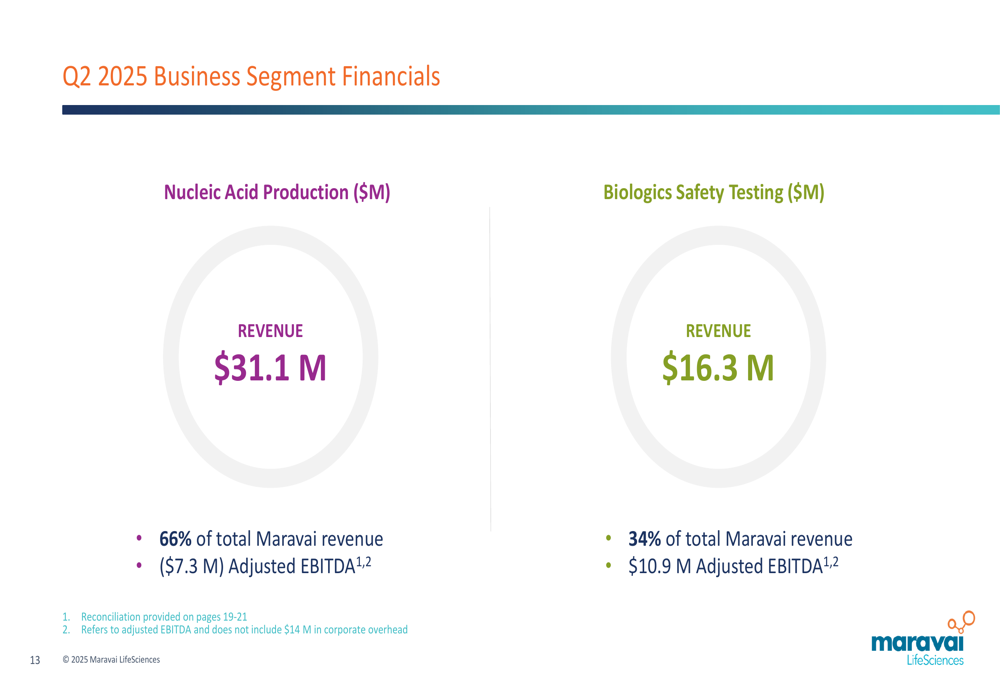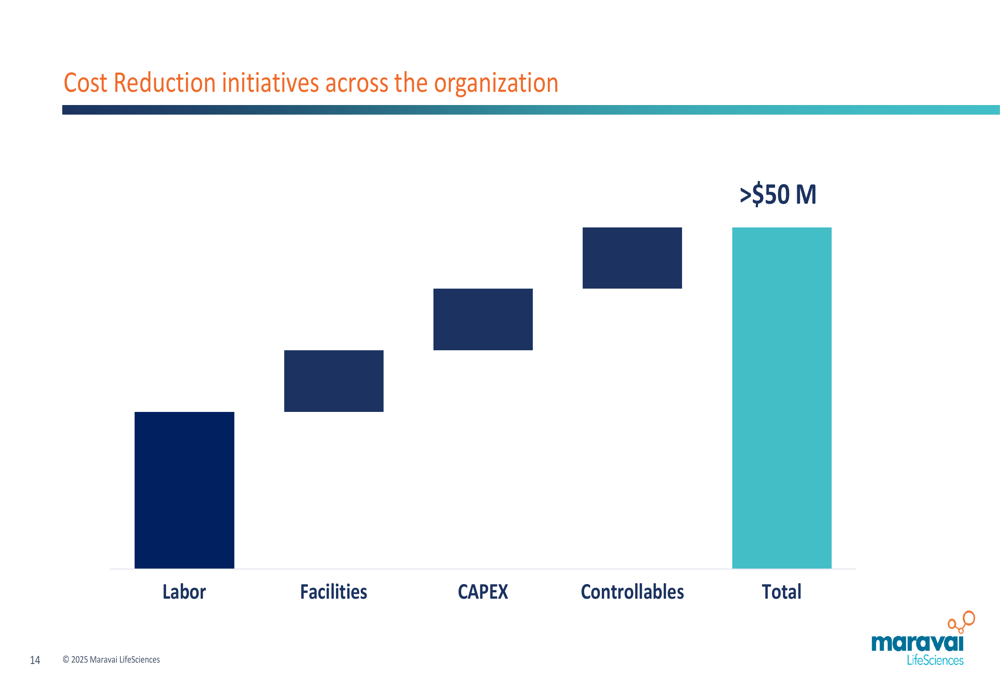Oracle launches unified health data exchange console
Introduction & Market Context
Maravai LifeSciences (NASDAQ:MRVI) presented its Q2 2025 financial results on August 11, 2025, revealing a company in transition with new leadership implementing significant restructuring initiatives amid ongoing financial challenges. The stock traded up 3.64% in after-hours trading following the presentation, reaching $2.28 after closing the regular session down 6.36% at $2.20.
The life sciences tools provider reported quarterly revenue of $47.4 million and a substantial GAAP net loss of $69.8 million, which included a $30.4 million non-cash goodwill impairment charge. The results come as Maravai continues to navigate a difficult post-pandemic market environment, with the stock trading near its 52-week low of $1.67, far below its 52-week high of $9.95.
Executive Summary
Maravai’s Q2 2025 presentation introduced the company’s newly appointed executive leadership team. Bernd Brust, who joined as CEO and Board Member on June 9, 2025, brings over 30 years of experience in technology-based life science companies. Raj Asarpota, appointed as CFO on June 30, 2025, has extensive experience guiding companies through transformation periods.
The new leadership team outlined three strategic priorities: improving operational execution through a restructuring plan targeting more than $50 million in annual cost savings, focusing on revenue growth and diversification, and returning to profitability with positive adjusted EBITDA and free cash flow targeted for the second half of 2026.
As shown in the following introduction of the new CEO:

Quarterly Performance Highlights
Maravai reported total revenue of $47.4 million for Q2 2025, consistent with the company’s previous guidance of $45-50 million. Revenue was primarily driven by the Nucleic Acid Production (NAP) segment, which contributed $31.1 million or 66% of total revenue, while the Biologics Safety Testing (BST) segment generated $16.3 million or 34%.
The company’s revenue breakdown reveals a diverse customer base and geographic reach, with North America accounting for 65% of sales, followed by EMEA (18%), Asia Pacific (12%), and China (5%). The customer mix shows balanced distribution across BioPharma (28%), Life Sciences & Diagnostics (30%), Academia (8%), CRO/CMO/CDO (7%), and Distributors (27%).
The following chart provides a comprehensive breakdown of Q2 2025 revenue:

Despite the revenue performance, Maravai reported challenging profitability metrics. The company posted a GAAP net loss of $69.8 million, which included a non-cash goodwill impairment charge of $30.4 million. Adjusted EBITDA was negative $10.4 million, representing a margin of -22%. Basic and diluted earnings per share were -$0.27, while adjusted EPS was -$0.08.
The key financial metrics are illustrated in the following visualization:

Segment performance showed a stark contrast between the company’s two business units. While the Biologics Safety Testing segment generated positive adjusted EBITDA of $10.9 million, the larger Nucleic Acid Production segment reported negative adjusted EBITDA of $7.3 million. Corporate overhead costs of $14 million further impacted the overall profitability.
The following chart details the performance of each business segment:

Financial Position
Maravai maintained a cash position of $270 million as of the end of Q2 2025, down from $285 million reported in Q1. With long-term gross debt of $297 million, the company has a net cash position of -$27 million. The company reported $10.3 million cash used in operations during the quarter, reflecting ongoing operational challenges.
Other financial highlights include net interest expense of $3.8 million, stock-based compensation of $6.8 million, and fully diluted shares outstanding of 255 million. The company’s balance sheet metrics are illustrated in the following chart:

Strategic Initiatives
The centerpiece of Maravai’s strategy under its new leadership is a comprehensive cost reduction initiative targeting more than $50 million in annual savings. The plan focuses on four key areas: labor, facilities, capital expenditures, and controllable expenses. This restructuring effort is designed to streamline operations and improve efficiency across the organization.
The cost reduction strategy is visualized in the following chart:

Beyond cost-cutting, the company outlined a three-pronged strategic approach to position itself for sustainable, profitable growth. This includes improving operational execution through a strategic realignment to a functional operating model, focusing on revenue growth and diversification by expanding product offerings and upgrading online tools and e-commerce platforms, and returning to profitability.
The strategic priorities are detailed in the following slide:

Forward-Looking Statements
Maravai’s leadership team provided a timeline for the company’s return to profitability, projecting positive adjusted EBITDA in the second half of 2026. The company also targets positive free cash flow in the same period, suggesting that the restructuring and strategic initiatives will take approximately a year to fully materialize.
The company’s closing remarks emphasized the three key strategic priorities that will guide Maravai’s transformation: commitment to operational excellence, focus on revenue growth and diversification, and return to positive financial metrics in 2026.
As shown in the following summary of strategic priorities:

CFO Raj Asarpota expressed optimism about the company’s future, stating: "What drew me to the company is its meaningful mission, strong scientific foundation, and the real potential to make an impact. I look forward to partnering with the Maravai team to help shape the company’s next chapter and create lasting value for our customers and shareholders."
While Maravai faces significant challenges, the new leadership team is implementing a clear strategy focused on cost reduction and operational efficiency to navigate the current market environment and position the company for future growth and profitability.
Full presentation:
This article was generated with the support of AI and reviewed by an editor. For more information see our T&C.
